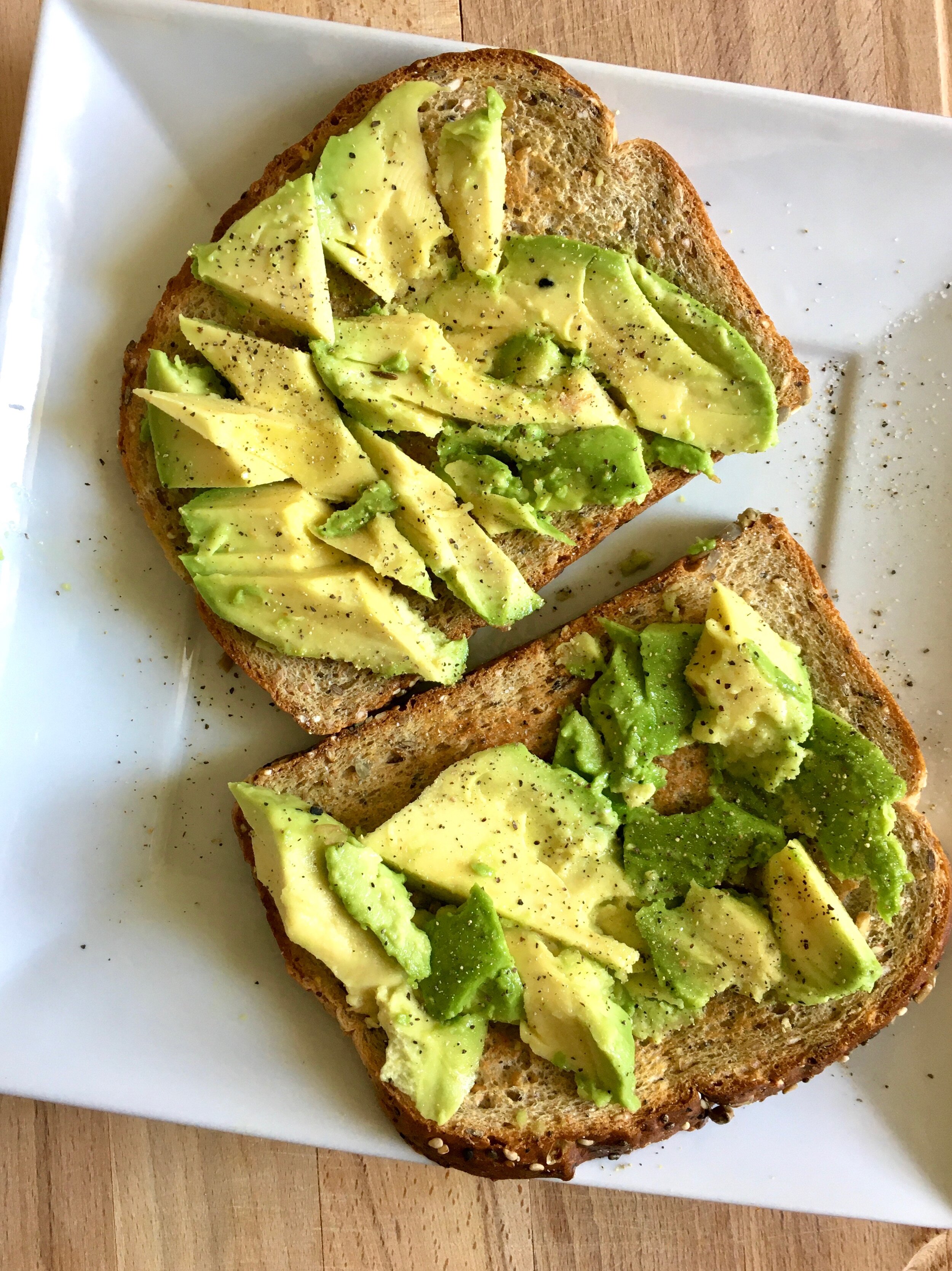Exploring the Sustainability of Avocado Toast
The “classic millennial” breakfast: avocado toast. While I pretended to not “get it” for a while, I am now deeply in love with avocado toast. I don’t eat it regularly, but every time I do, it hits the spot. The creamy avocado with crunchy bread and some salt and pepper on top, it really gets the combination just right. Avocados were always my mom’s favorite when I was growing up. She’s a California-born avocado lover through and through—and I have many memories of her eating avocado plain with a spoon while I looked on in disgust. As my tastebuds matured I quickly stopped saying “yuck” to her “yum” and now even find myself doing the same thing when summer comes and avocados from California hit the shelves. Avocados are always something that always reminds me of my mother taking time to enjoy simple things, and avocado toast is now our go-to breakfast together. I savor every bite.
Grounded Grub recently received a request from a member of our community about a sustainable version of avocado toast. Honestly, the request threw me for a loop because I couldn’t come up with a conventional way to make it more sustainable. Avocados are a water intensive crop that can only be grown in a handful of areas around the world. That means that no matter where they’re being grown there’s a lot of water usage and likely a lot of transport energy to get to your plate. Avocados are a thirsty crop and probably the best way to make avocado toast more sustainable is to just eat it less often. Is that a cop out answer? Maybe, but it’s the most honest one I can come up with today. Unfortunately sometimes there isn’t a sustainable “fix,” but rather we can just enjoy it in moderation. Really soak up and appreciate the flavors when you do have it, and try not to make avocados a year-round staple. When you are shopping for avocados, we hope you’ll think about a few things to lessen your impact.
Buy organic: In terms of pesticide use, avocados are considered one of the “cleanest” foods, meaning that due to their thick skins there is very little residue of pesticides and other chemicals in the food that you are actually eating. Many people are very focused on eating “clean” and recommend not “wasting” your money on organic avocados. This is simply considering how much pesticide is going in your body, not how much pesticide was used on the crop. In terms of the actual average amount of chemicals per acre, avocados are comparable to other crops, so buying organic when possible helps keep those chemicals out of the environment.
Consider seasonality and region: Seasonality and locality with avocados is a tough one. Avocados grown in Mexico make up two thirds of the US market. The majority of the rest are grown in California with a small percentage coming from Chile. Buying domestic avocados reduces the amount of energy used for transport. California avocado season peaks from May to August with some domestic production starting earlier in spring. While California avocados are likely to be grown a bit closer to you, they’re likely not very “local” for most of us. Avocados from Mexico peak between November and April and are often in much higher volumes in grocery stores. Due to the climate, avocados from Mexico use significantly less irrigation water to grow than those from California.
Store properly: One of the best ways to reduce the impact of your avocado purchasing is to make sure you store them properly and use them in a timely fashion. I honestly don’t know anyone who has perfected the art of perfect avocado storage (I have cut into a squishy one with gray insides on countless occasions…), but there are some best practices. To find out if your fruit is ripe, gently squeeze the avocado and if it yields under pressure, has dark green to black skin and has a bumpy external texture, you’re ripe and ready to eat! If you don’t want to eat right away, ripe avocados can be stored in the fridge for 2-3 days. If it isn’t ripe yet, place on the counter for 4-5 days checking back regularly to see if it’s ripe. Planning when you’ll use them and reducing waste is a great way to reduce the impact.
Stick to best practices with your bread and toppings:
When it comes to bread for your toast and other toppings, you know the drill: stick to plant-based, local ingredients and minimal packaging. Buying local bread is a great way to eat local year-round, and spices are a great thing to buy in bulk to reduce packaging.
While our primary focus is sustainability we are also lovers of flavor and love to mix it up. We put together some of our favorite topping ideas for your avotoast:
Salt and pepper: the classic
Tomato: the perfect summertime freshness!
Hot sauce: for the fiery folks
Trader Joe’s “Everything but the Bagel:” all the flavors you want and need, in just a swish of the wrist
Sprouts: more green and a little crunch! Easy to source locally as well
Lime juice: I mean it’s basically guac already so you might as well just keep it going
Chili powder: see above.
Pomegranate seeds: I’ve personally never tried this but Ben is a professional food experimenter and things always turn out great... so I would trust him on this one!
Honey: Yummmmm, yes please for the sweetness!
Sesame oil: A simple way to take food up a notch
Did we miss your favorite on this list? Contact us and let us know! We’re always looking for more ideas.
Sources:



